Author Guest Post: Matthew Wharmby
Even in the unified one-company London Transport days, the bus scene in the capital was sourced from more than one large manufacturer. From the 1930s to the 1960s, AEC faced stiff competition from Leyland, but after Leyland absorbed AEC the new giant was unable to maintain the pace of deliveries or the quality of products, thus inviting outside and even foreign manufacturers onto the scene. MCW was Leyland’s chief competitor for London Transport bus orders from the late 1970s into the late 1980s. Then came deregulation, which was just one of the many outside factors to contribute to the demise of Leyland itself.
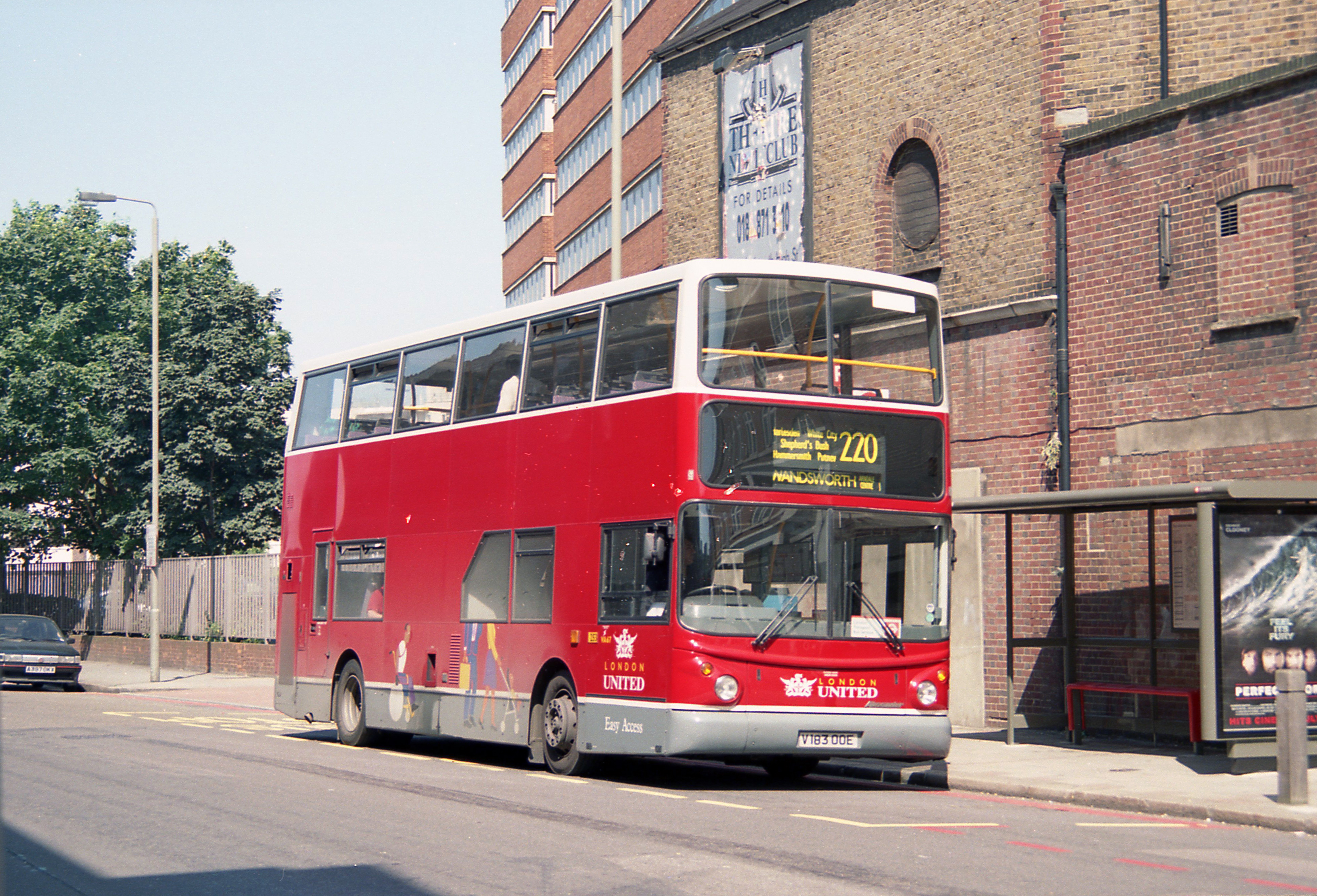
and a set of full blinds, in this case teaming these traditional aspects with London United’s
splendid post-privatisation livery. Shepherd’s Bush garage took that company’s first Volvo
B7TLs with Alexander ALX400 bodywork for the 220 early in 2000; on 22 July VA 67 (V183
OOE) is coming up to the route’s Wandsworth terminus.
Who was left to build the buses taking London forward into the new era of privatised companies and their independent-sector competitors? As the 1990s progressed, Volvo’s trucking arm had expanded into buses and eventually became powerful rough to buy out Leyland’s product line, continuing its successful Olympian until the accessibility imperative mandated the end of production in 1999. Then there was Dennis, also rooted in industrial plant but able to parlay a small bus-manufacturing offshoot into the country’s strongest such manufacturer due to the invention of the all-conquering Dennis Dart.
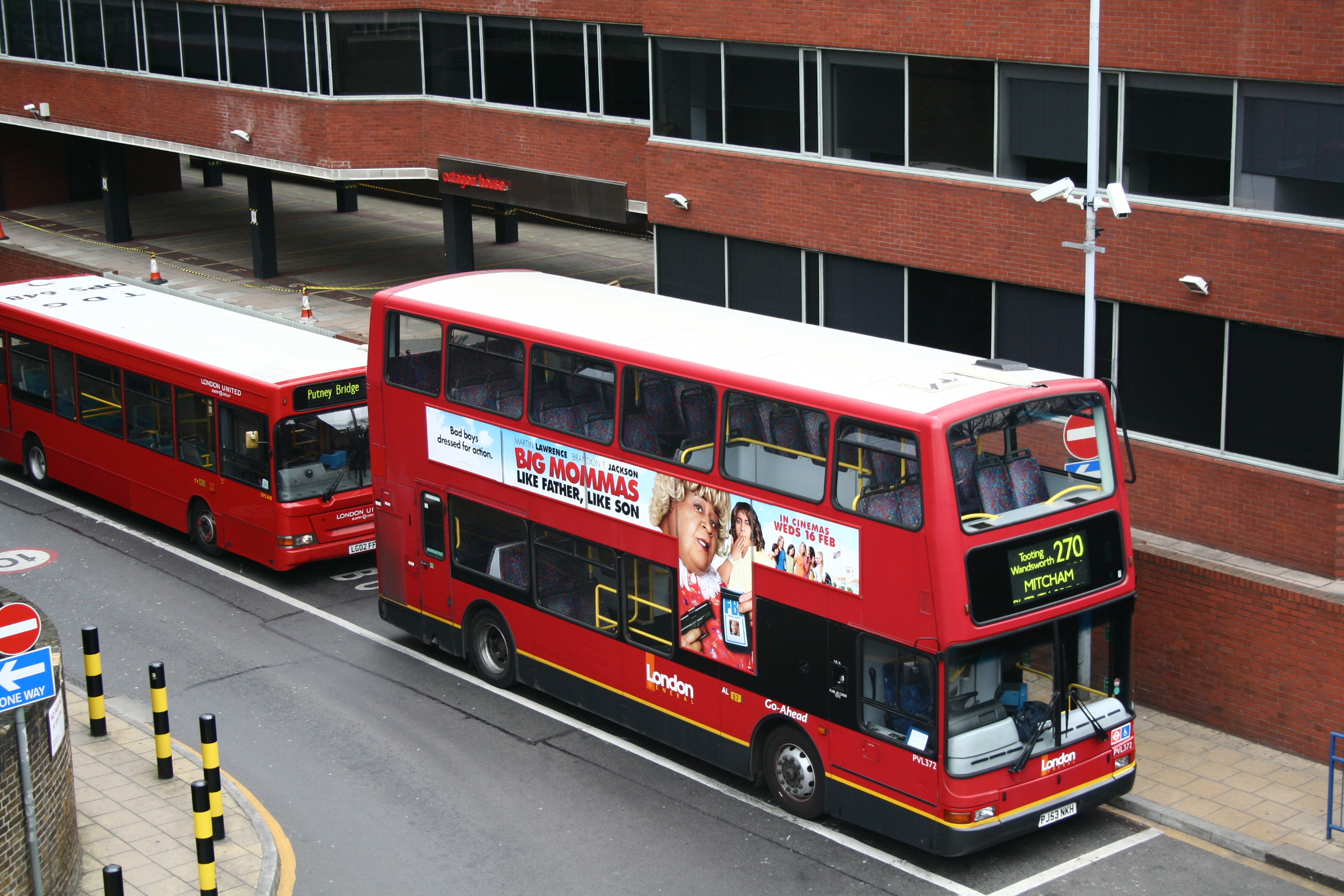
President body, which appeared on Dennis Tridents and Volvo B7TLs in equal numbers. Go-
Ahead took 419 Plaxton-bodied Volvo B7TLs, though there were numerous differences between several batches. In this shot of Merton’s PVL 372 (PJ53 NKH), taken from the northbound District Line platform at Putney Bridge on 13 April 2011, the staircase has moved to the front and the blind specification has been coarsened.
Where low-floor double-deckers were concerned, Volvo was beaten to the punch by DAF, who represented a third, albeit much smaller, factor in the tussle for orders from London companies, which by 1999 had inevitably consolidated under large corporations. Volvo’s post-Olympian test rig had a vertical engine, which wasn’t the preferred specification of British bus company engineering directors, so lost a year to DAF’s DB250RS(LF) and Dennis’s Trident whilst a transverse-engined model was developed. This bowed in 2000 as the Volvo B7TL, and immediately picked up large orders, both in London and nationwide.
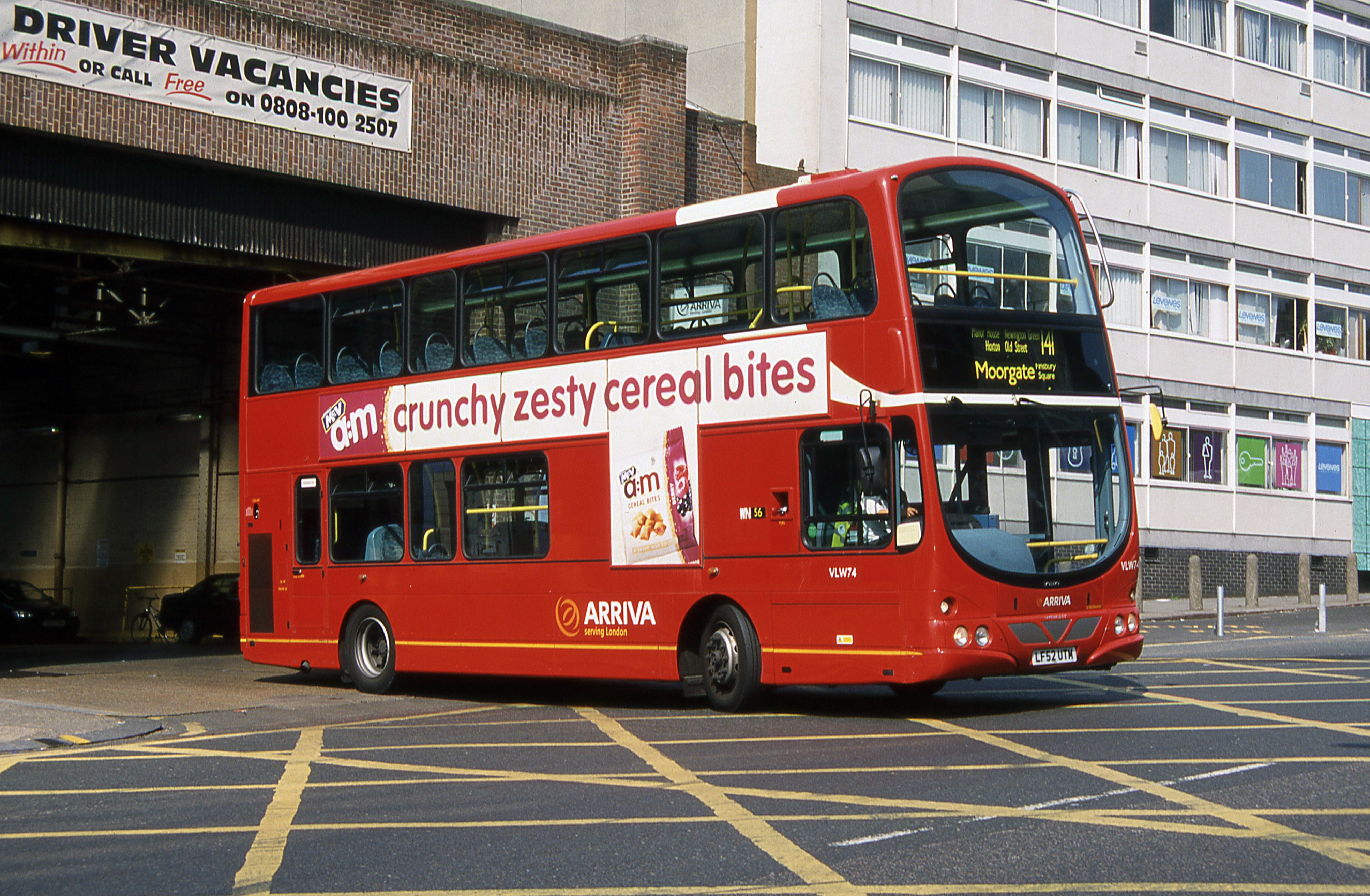
DAFs, became iconic, its facial appearance being compared to that of the equally classic
Nokia 3310 mobile phone; and you’d be just as hard pressed to find any of those still in use
either! This is Arriva London North’s VLW 74 (LF52 UTM), leaving Wood Green garage on 4 August 2003.
In six years of production Volvo sold just over two thousand B7TLs to London companies operating routes on tender to TfL, only slightly less than the competing Trident despite its year catching up. Go-Ahead took nearly eight hundred, having tried out the Trident at the same time but found it wanting. Metroline, Arriva and First, with roughly equal totals, dual-sourced Volvo B7TLs with Dennis Tridents as resolutely as London Transport had with Leyland Titans and MCW Metrobuses. Smaller numbers were taken by London United, London Easylink, East Thames Buses, Sovereign, Travel London and just the one for Sullivan Buses. However, Stagecoach, heavily committed to Dennis (even pulling that company’s fat out of the fire altogether following a corporate collapse in 2004!) didn’t buy a single Volvo B7TL for London.
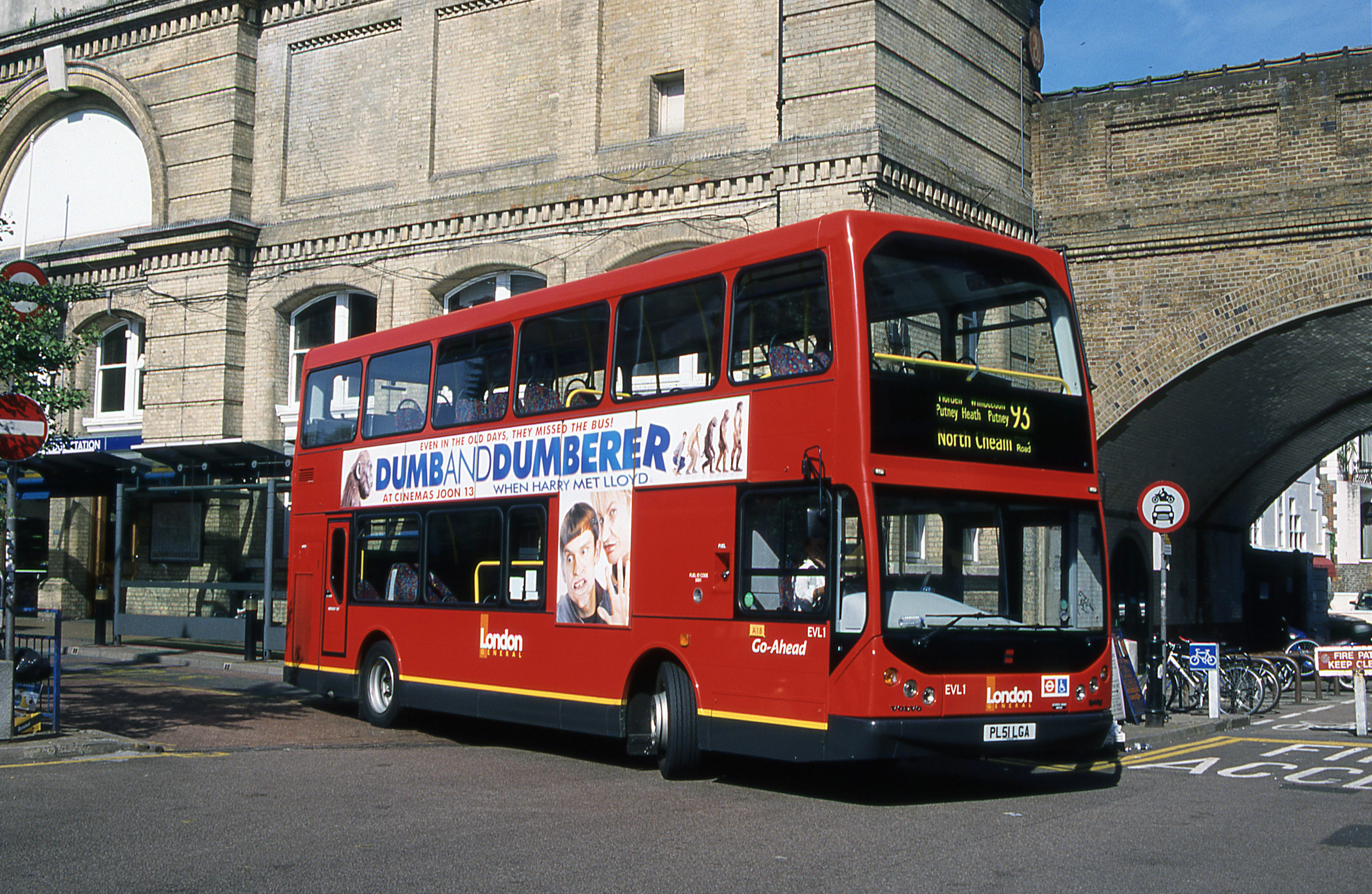
Volvo B7TL being given the proprietary spelling Vyking. London General took 52 to form an
EVL class, assigning all of them to Sutton. On 28 June 2003 EVL 1 (PL51 LGA) is leaving
Putney Bridge station, but this class was short-lived, lasting only seven years as mandated
by their routes’ original contracts.
With bodies by Alexander (ALX400), Plaxton (President), East Lancs (Vyking) and Wright (Eclipse Gemini), the Volvo B7TL was smooth-running, at least in its early years, the Trident’s more sophisticated sibling. Production ended in 2006 due to increased noise concerns, with the model giving way to the B9TL diesel and its later B5LH hybrid offshoot (about which a book has already been written by this author for Pen & Sword), but B7TLs collectively worked in London for just over twenty years. The last one of all managed to outfight a COVID-inspired stand-down to survive as a school bus, coming off after 22 July 2021.
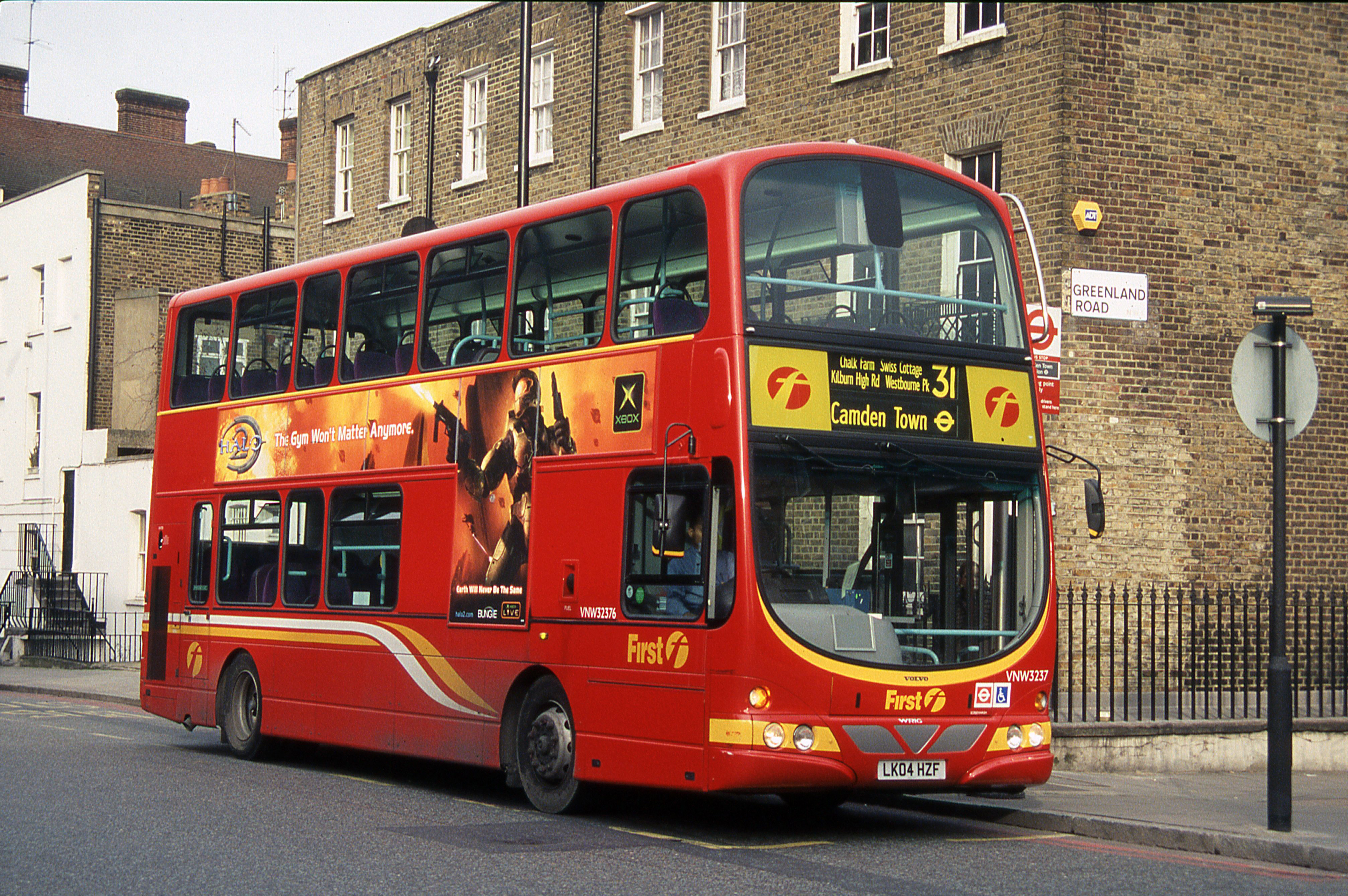
devices as well as coloured blind box glass, as shown off by Westbourne Park’s VNW 32376
(LK04 HZF), one of a large batch of Wright-bodied Volvo B7TLs that restored double-deck
operation to routes 28, 31 and 328. It is seen on 27 November of that year in Camden Town,
though in later years all the yellow and white trim would be removed and it would pass with
its company to Tower Transit in 2013.
Published by Pen and Sword in October 2021, The London Volvo B7TL tells this successful modern type’s story in the capital from start to finish, with copious tables and over four hundred colour pictures.
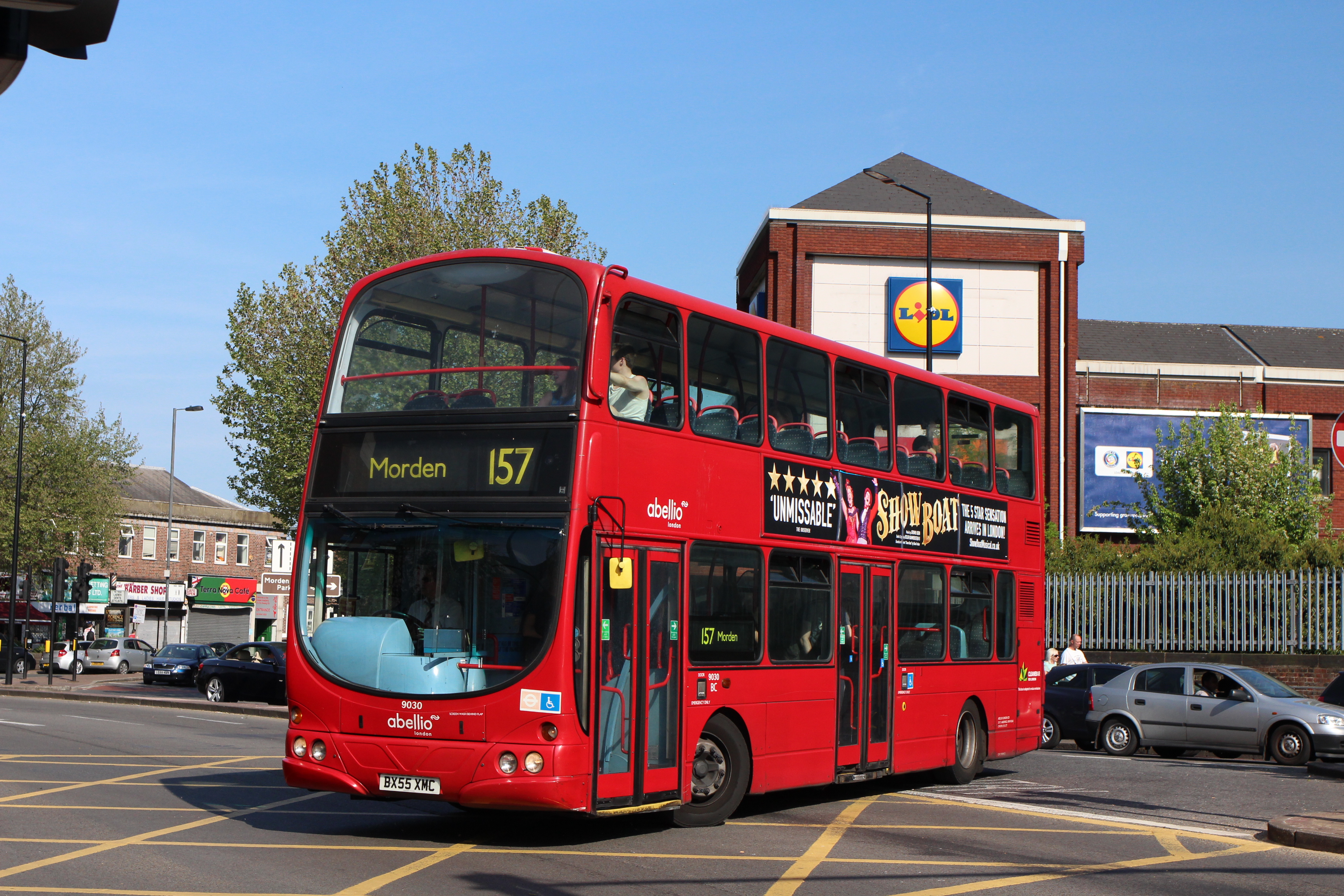
second identity identified closely with its then parent, Travel West Midlands, buying the
same kind of buses and fitting them out with the interior known there. 9030 (BX55 XNC) with
appropriate Birmingham registration represents the 10.6m chassis of the Volvo B7TL, and
on 8 May 2016 is seen entering Morden station on the 157. The blind boxes were by now so
simplified as to be almost useless.
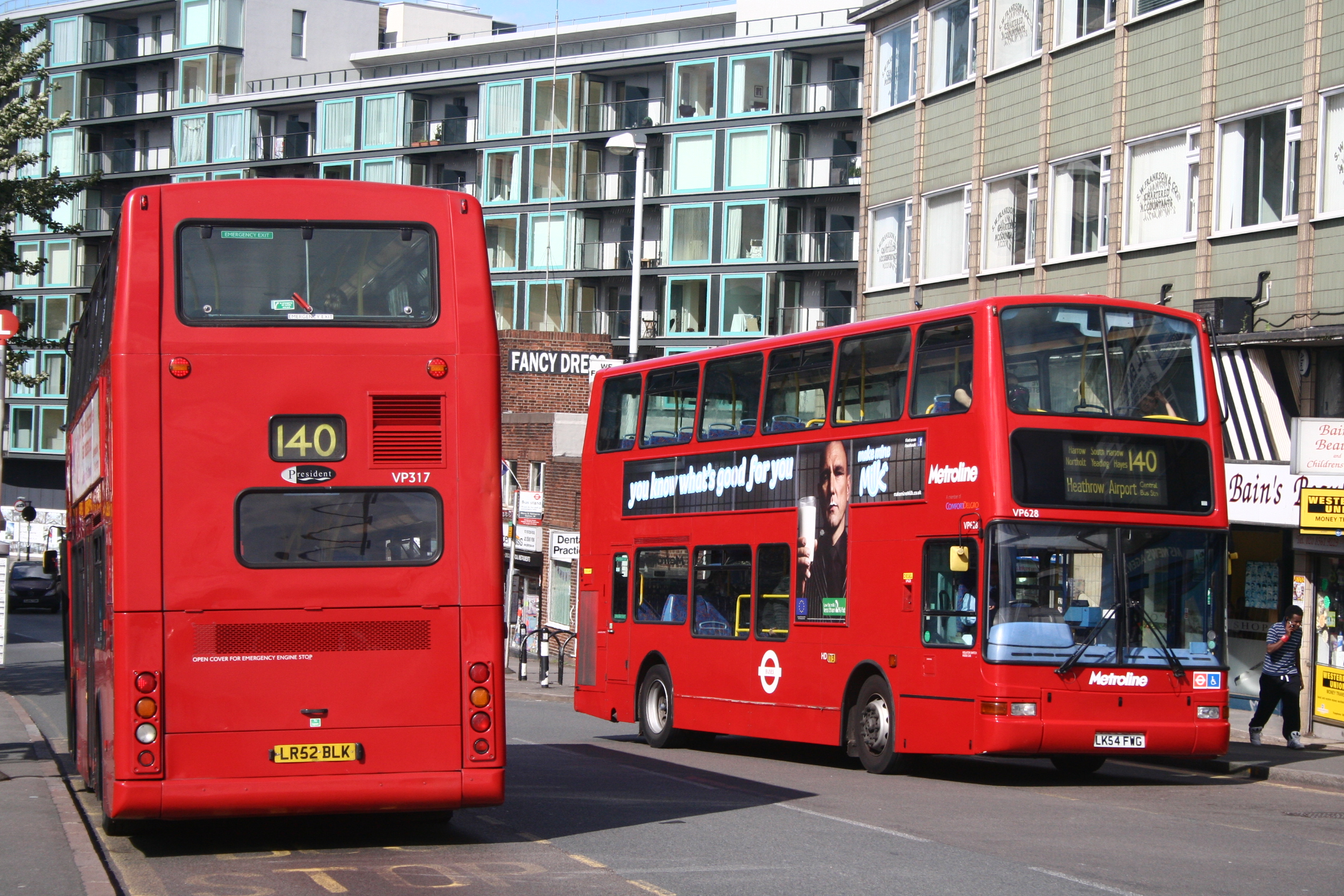
window, though Alexander’s ALX400 was full-width, exposing various innards to be found
behind it. Metroline not only dual-sourced but switched types repeatedly in that, for
example, Harrow Weald garage started off with TA-class Tridents before replacing those
with VPL-class Volvo B7TLs, only to re-equip later again with shorter VPs. On 9 June 2012,
by which time all-red repaints had deleted the blue skirts these buses carried when new,
VPs 317 (LR52 BLK) and 628 (LK54 FWG) pass at Hayes & Harlington station.
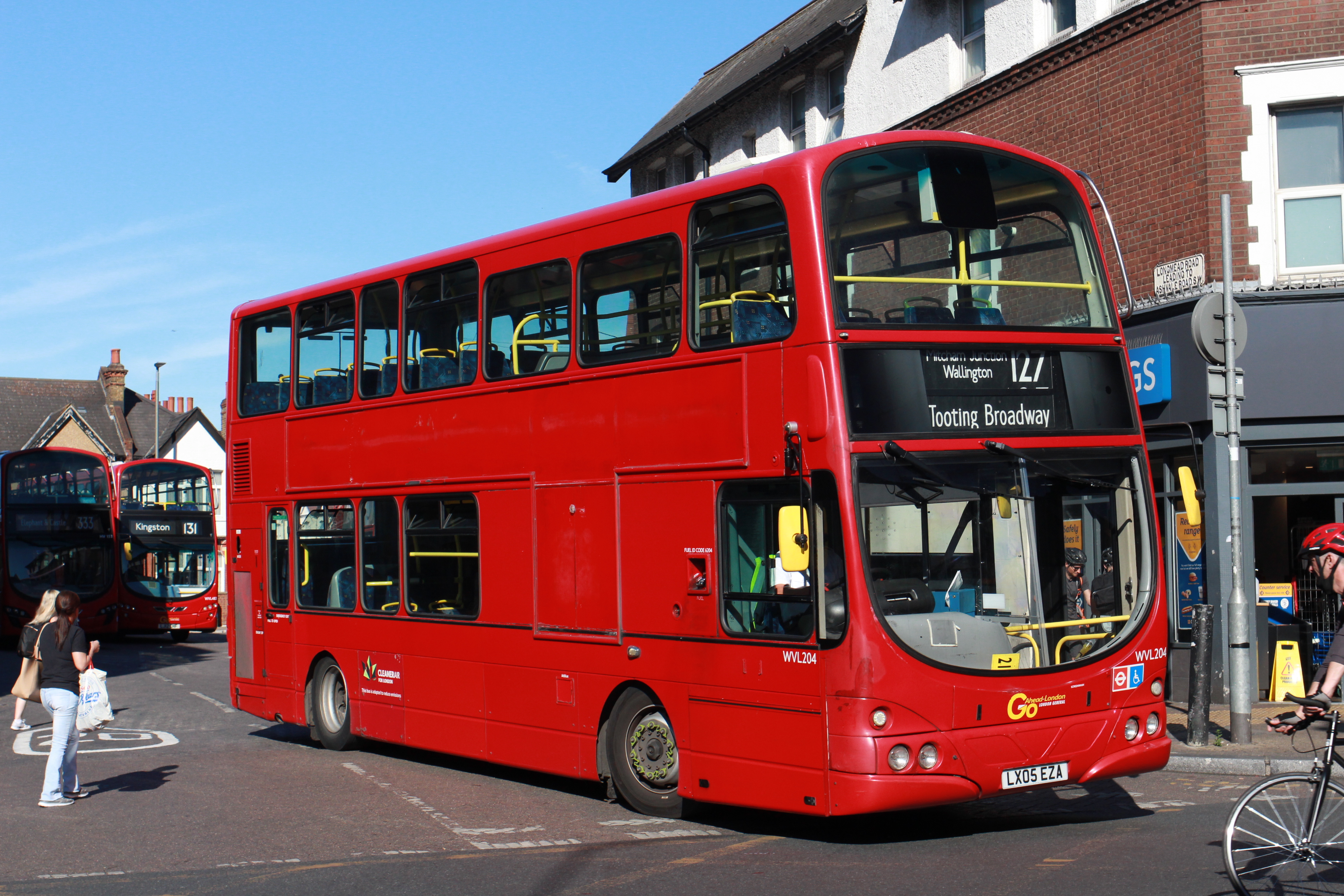
blanket replace everything. School routes tend to field buses at the end of their careers, or,
in the case of Metrobus’s Croydon garage, mix whatever is put in. The 127 was the last
holdout for three WVLs over 2019 and 2020 and WVL 204 (LX05 EZA) was the last in London
service at all. Seen at Tooting Broadway on 30 July 2020, it was redeployed at year’s end to
London General at Merton for school route 655, managing to dodge two separate
lockdowns (and the deadline for the last chapter of the book in which it is heavily featured!)
to survive until 22 July 2021.
……………………………………………………………………………………………………………….

The London Volvo B7TL is available to order here.

